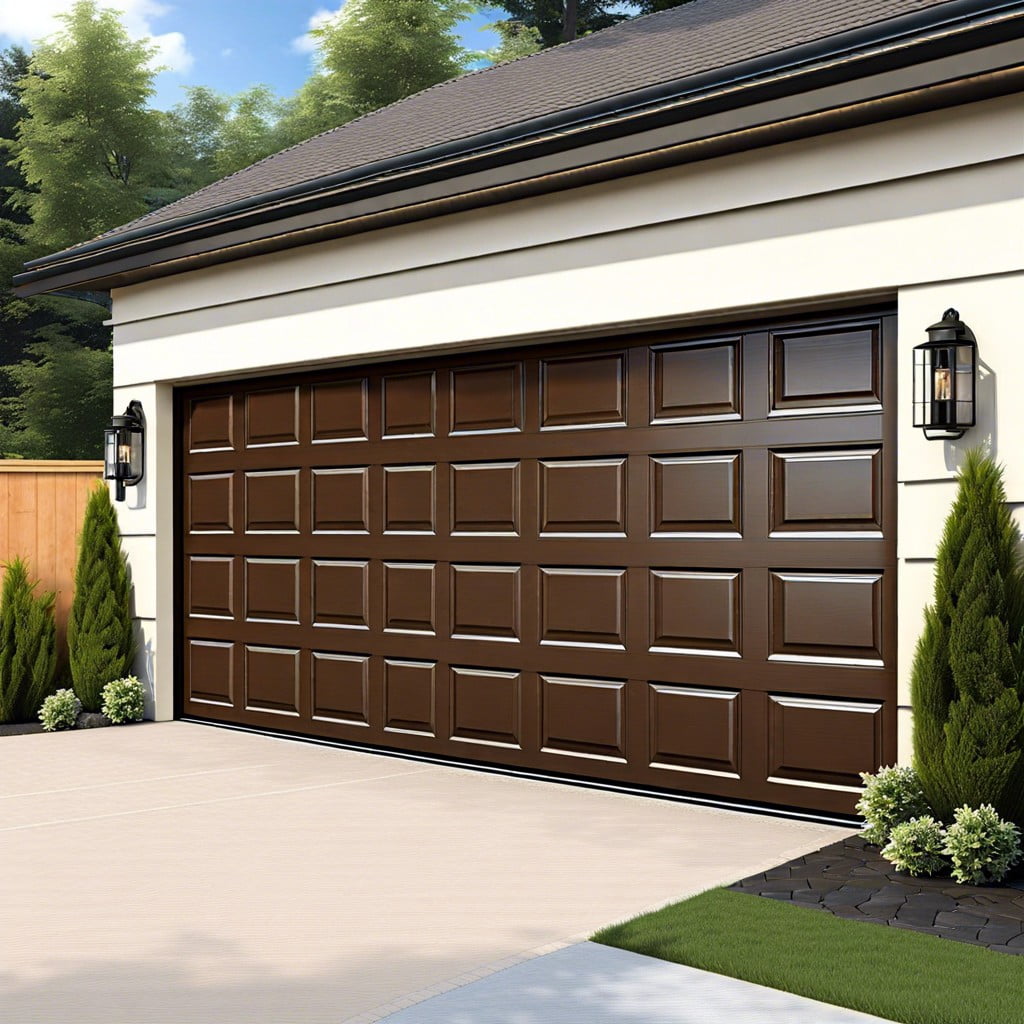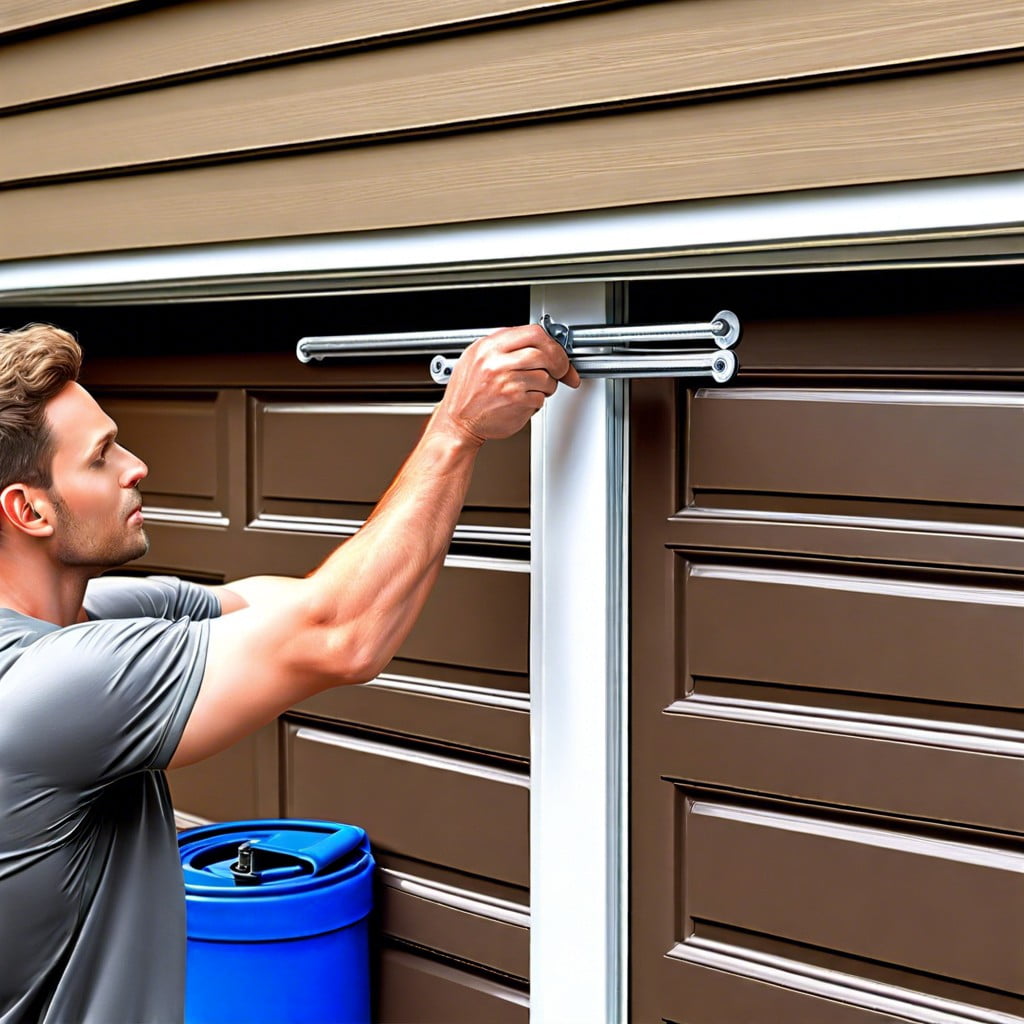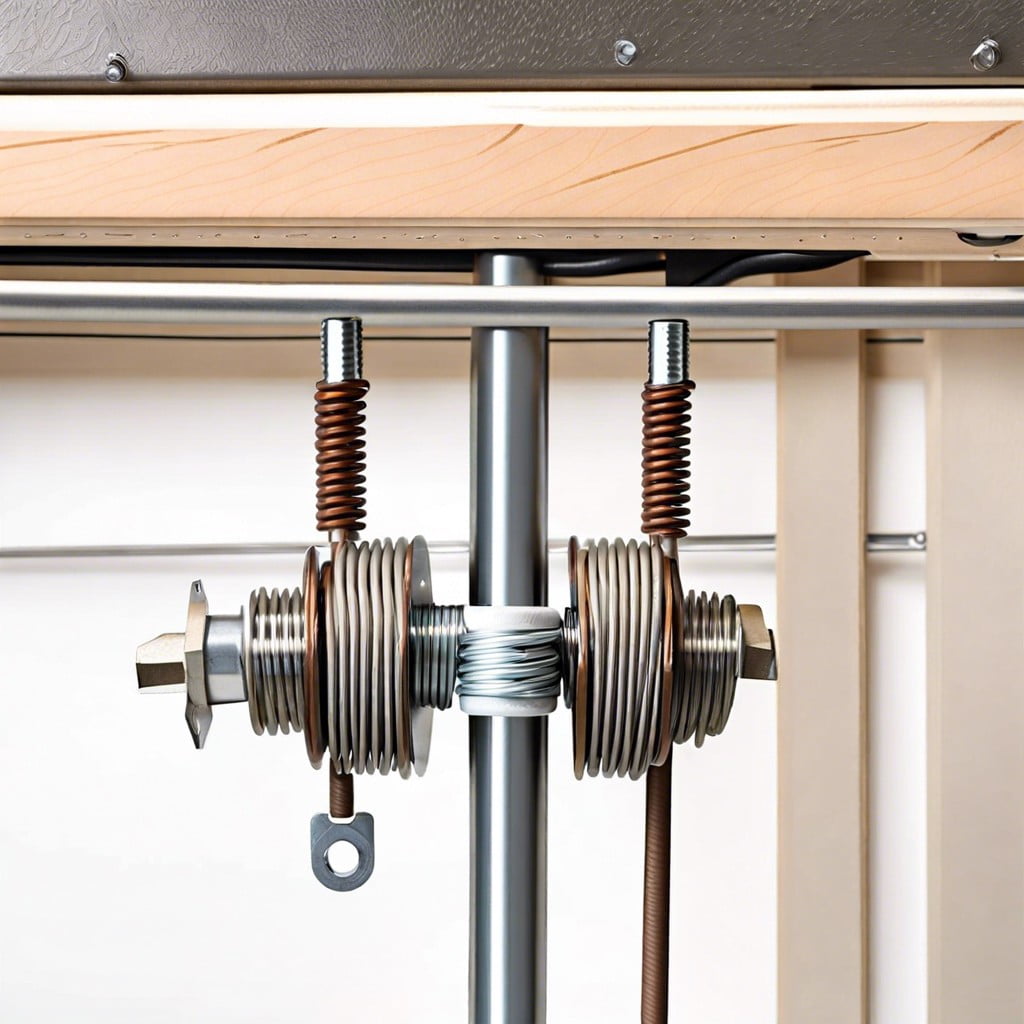Explore the importance of garage door winding bars in maintaining the functionality and security of your garage, because understanding their proper usage can significantly increase the lifespan of your garage door.
Key takeaways:
- A precise fit is key when using winding bars
- Length matters for control and safety
- Durability is crucial for withstanding spring force
- Check specifications for correct diameter and length
- Safety protocols must be followed when using winding bars
Definition of Garage Door Winding Bars

Garage door winding bars are specialized tools used in the adjustment and replacement of torsion springs on garage doors. These steel rods typically come in pairs and are inserted into winding cones attached to the springs. They serve a critical role in the process by providing leverage to safely apply or release tension.
- A precise fit is key: Winding bars must match the winding cone’s holes perfectly to ensure a secure grip and to prevent slippage, which could lead to injury or damage.
- Length matters: Generally, longer winding bars provide greater control and reduce the risk of harm from the potential release of spring tension.
- Durability is crucial: High-quality steel is essential for withstanding the force exerted by torsion springs during tension adjustments.
- Not a one-size-fits-all: It’s important to check the specifications of your garage door system to obtain the correct diameter and length for your winding bars.
Importance of Proper Size for Winding Bars

Selecting the correct size of winding bars for your garage door is crucial to both the efficiency of the task and your safety. Winding bars that fit snugly into the winding cone holes prevent slippage that can lead to injury or further damage to the door mechanism.
Typically, winding bars come in diameters of ½ inch or ⅝ inch, so ensure your bars correspond to the specifications of your garage door system. Using bars of inadequate size can cause them to bend under tension, potentially resulting in a release of spring force that could cause injury or damage.
Moreover, correct sizing helps distribute the tension evenly as the springs wind or unwind, preserving the integrity of the springs for consistent operation. Always measure the winding cone holes of your garage door to ascertain the precise diameter required for the winding bars before making a purchase.
How to Use Winding Bars Safely

Safety goggles and gloves are first-line defenses against potential accidents when handling high-tension springs and winding bars.
Before beginning, ensure the garage door is closed to relieve tension on the springs. Firmly secure the door by clamping locking pliers onto the track.
Position one winding bar into the bottom hole of the winding cone at the end of the spring. Keep a firm grip and maintain full control as the spring’s tension can exert considerable force. Turn the bar quarter-turn increments, allowing the bar to rest against the garage door to prevent it from snapping back.
After each increment, carefully insert the second winding bar into the next hole up while holding the first bar in place. Then, remove the first winding bar while the second one holds the tension. Repeat this process until the spring is sufficiently tensioned.
Always remain to the side of the winding bars, not directly in their potential path, and never loosen or remove set screws without having winding bars properly inserted. Remember, releasing tension abruptly can be dangerous and damaging to person and property.
Regularly inspect the bars for signs of wear, and never substitute with improvised devices. The correct application of garage door winding bars mitigates risk and ensures a safe and effective adjustment process.
Step-by-Step Guide to Tensioning Garage Door Springs

Before starting, ensure your garage door is closed, clamped down, and that the electric opener is unplugged.
1. Insert the bottom end of a winding bar into one of the holes on the winding cone at the end of a spring.
2. Hold the bar in place tightly and loosen the set screws on the cone with a wrench. This will release the spring’s tension onto the winding bar.
3. Carefully wind the spring by turning the winding bar a quarter turn at a time, inserting the second bar at the top before removing the first.
4. Count the number of quarter turns you make; typically, a standard 7-foot door requires 7-8 quarter turns to achieve proper tension.
5. Once the desired tension is reached, tighten the set screws back down while holding the last winding bar in place.
6. Repeat the process on the other spring if necessary.
Remember: tensioning garage door springs can be dangerous and should only be attempted by those confident in their ability to safely perform such tasks. Always wear safety glasses and never adjust the set screws without a winding bar in place.
Common Mistakes to Avoid When Using Winding Bars
Overlooking the tension in springs can lead to dangerous, uncontrolled release of energy. Always relieve tension evenly by alternately working on each winding cone.
Neglecting safety glasses is a risk not worth taking. Metal fragments or a snapped tension spring can cause severe eye injury. Always wear appropriate safety gear.
Skipping the use of appropriate gloves can result in hand injuries. Winding bars require a firm, slip-free grip. Gloves provide protection and better control.
Using makeshift tools instead of proper winding bars tempts fate. Improper tools can slip or break, leading to injury. Only use winding bars designed for your specific garage door system.
Ignoring the door’s balance following adjustment can leave it difficult to operate or cause undue stress on the door opener. After making adjustments, test the balance by manually lifting the door to ensure it moves smoothly and stays open on its own about halfway up.
Avoiding regular checks on the winding bars for wear and damage is a misstep. Inspect before each use to ensure they are in good condition and fit securely into the winding cone holes.
Tips for Maintenance of Garage Door Tension Springs
Regular inspection is key; plan to examine your tension springs biannually. Look for signs of wear, such as rust or gaps in the coils.
Lubrication helps maintain the integrity of the springs; apply a silicone-based lubricant every few months to prevent corrosion and reduce friction.
Keep the garage door balanced; an unbalanced door puts unnecessary strain on the springs and can lead to premature failure.
Listen for unusual noises during operation, as these can indicate problems with the spring mechanism.
If tension adjustments are needed, always use the appropriate winding bars and follow safety protocols.
Avoid making large adjustments in one step; quarter turns are recommended to finely tune the tension.
Remember, if there’s any uncertainty about maintaining or adjusting the springs, consider enlisting a professional for a safe and effective service.
When to Replace Garage Door Winding Bars
Garage door winding bars are robust tools crafted to endure significant strain when adjusting or replacing torsion springs. However, after extensive use, signs of wear or damage, such as bending, cracking, or visible metal fatigue, may appear, indicating the need for replacement. Using compromised winding bars can lead to inaccurate spring tension adjustment or cause injury.
It’s also wise to replace them if they no longer fit securely into the winding cone holes of the garage door springs, as a snug fit is crucial for safety and effectiveness. Furthermore, ensure adherence to the manufacturer’s recommendations regarding lifespan and usage frequency to determine the ideal replacement timetable for these critical tools.
Purchasing Considerations for Winding Bars
Selecting the right winding bars is crucial for both safety and effectiveness. Here are key factors to consider:
1. Compatibility: Ensure the diameter of the winding bars matches the winding cones on your garage door springs to prevent slipping.
2. Material: Opt for hardened steel winding bars for durability and to minimize the risk of bending or breaking under tension.
3. Length: Choose bars that are long enough to provide ample leverage for turning the winding cones, typically around 18 inches.
4. Safety Features: Look for winding bars with rounded ends to reduce the risk of injury and grooves or knurls that improve grip.
5. Set: Consider purchasing a set of winding bars, as most garage doors require the use of two bars for balancing the tension evenly.
Remember, investing in quality winding bars can make garage door maintenance safer and more manageable.
DIY Vs. Professional Garage Door Repair Services
Choosing to DIY or hire a professional for garage door repairs hinges on several factors. Skill level is paramount—tensioning springs with winding bars requires mechanical aptitude and a strict adherence to safety protocols. Mistakes can lead to injury or further damage to the garage door system.
DIY enthusiasts with experience and confidence in handling such tasks can save on labor costs. However, they should never compromise on using the proper tools and protective gear, and they must understand the intricacies of their specific garage door model.
On the other hand, hiring professionals offers peace of mind through expertise and often a warranty on the repair work. Trained technicians can diagnose underlying issues that may not be apparent to the untrained eye, ensuring a comprehensive repair beyond the immediate fix.
Balancing cost, safety, and quality of the repair is essential in making this decision. If in doubt, seeking a professional assessment can provide clarity without committing to the full cost of a repair service.
FAQ
What can you use instead of winding bars?
Instead of winding bars, you can use a Safe-T-Winder™, a new type of winder that winds standard torsion springs by turning the end of the shaft.
What size are garage door winding rods?
Garage door winding rods typically measure 1/2" in outside diameter and approximately 18" in length.
What size winding bar do I need?
For residential and light commercial doors, an 18" winding bar is apt, while heavier commercial and industrial overhead doors require longer winding bars due to the increased spring tension.
What are the different types of garage door torsion bars?
The different types of garage door torsion bars include Standard Residential Torsion Springs, Standard Commercial Torsion Springs, EZ-SET Torsion Springs, Torquemaster Torsion Springs, Mini-Warehouse Torsion Springs, and Steel Rolling Door Torsion Springs.
How do you safely use winding bars for a garage door?
Winding bars for a garage door should be used by carefully inserting them into the holes of the winding cone, applying steady force to unwind the spring, and maintaining a firm grip on the bars at all times to prevent abrupt movements.
Can you adjust garage door springs without winding bars?
Adjusting garage door springs without winding bars is not advisable due to the high tension in the springs which can pose serious safety risks.
What material should a garage door winding bar be made of?
A garage door winding bar should be made of heavy-duty steel for durability and strength.